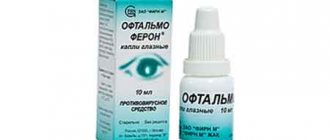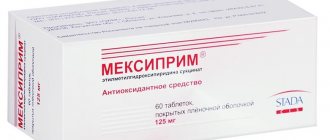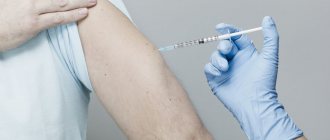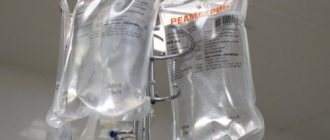Indications for use
Doctors usually prescribe Gangleron to patients for the treatment of the following diseases:
- Biliary dyskinesia;
- Acute form of cholecystitis;
- Hepatitis;
- Gangliosolarite;
- Cholangitis;
- Prevention of angina pectoris.
Pharmacological action of Gangleron
The medicine is an anticholinergic agent that affects the cholinoreactive systems of the autonomic and central nervous systems.
The mechanism of action of Gangleron is due to the binding of H-cholinergic receptors of the autonomic ganglia and blunting of the transmission of nervous excitation from preganglionic to postganglionic fibers.
According to the instructions, Gangleron inhibits carotid glomeruli and chromaffin tissue of the adrenal glands, stimulates the weakening of the reflex pressor effect. The active ingredient of the drug helps to dilate blood vessels and relax smooth muscles.
Gangleron has pronounced coronary dilation, antiulcer, local anesthetic, antispasmodic and ganglion-blocking effects.
Gangleron
Gangleron is a ganglion blocker with antispasmodic, antiulcer, local anesthetic and coronary dilation effects.
Release form and composition
Gangleron is available in the form of capsules and solution for subcutaneous and intramuscular administration.
Capsules are produced in packs of 50 pieces, solution – 2 ml in ampoules. One package contains 10 ampoules.
Indications for use
According to the instructions, Gangleron is used for smooth muscle spasm, which accompanies the following conditions:
- Chronic cholecystitis;
- Acute cholecystitis;
- Postcholecystectomy syndrome;
- Cholangitis;
- Chronic hepatitis;
- Acute hepatitis;
- Biliary dyskinesia.
Gangleron is used for gangliosolaritis and sympathoglionitis, as well as to prevent attacks of angina pectoris.
Contraindications
According to the instructions, Gangleron is contraindicated in the following conditions:
- Arterial hypotension;
- Degenerative changes in the central nervous system;
- Hypersensitivity to the components included in the product;
- Liver failure;
- CRF.
Directions for use and dosage
Gangleron in capsule form is taken 0.04 g 3-4 times a day. The maximum single dose is 0.075 g, and the daily dose is 0.3 g.
In the form of a solution, the drug is used for intramuscular and subcutaneous administration.
The dose for the first 1-2 days is 1 ml 3-4 times a day. After this, switch to a dose of 2-3 ml 3-4 times a day. The maximum single dose is 4 ml of solution, the daily dose is 12 ml.
From the tenth day of therapy, 1 injection is replaced by oral use of Gangleron. Within 4 days, they completely switch to oral administration of the drug.
The course of treatment is 28-35 days.
Side effects
The use of Gangleron may cause dizziness, weakness, dry mouth, tachycardia and allergic reactions.
special instructions
Intravenous administration of the drug can lead to a sharp decrease in blood pressure, urinary retention, atony of the bladder and intestines, as well as loss of memory.
Analogs
The following drugs are analogues of Gangleron:
Terms and conditions of storage
Gangleron must be stored in a dark and dry place out of reach of children. Shelf life – 2 years.
Found an error in the text? Select it and press Ctrl + Enter.
Features of Indian generics for hepatitis.
Until recently, the issue of treating hepatitis C was very sensitive. In location
5 main misconceptions about hepatitis C.
There are always many myths and misconceptions surrounding serious diseases. Hepati.
The drug Sofosbuvir for hepatitis C: description.
Treatment of hepatitis C causes multiple difficulties even with modern options.
Dentures: which option to choose.
Installation of a prosthesis is, as a rule, a necessary measure, which is resorted to if...
Milk teeth, but adult diseases: how to treat them.
Not only caries is a threat to adults and children, patients, regardless of age.
Complivit Antistress is a dietary supplement (dietary supplement), an additional source of flav.
Methods of use of Gangleron and dosage
Gangleron solution is intended for subcutaneous and intramuscular administration at a dosage of 1 ml in the first 2 days, after which they switch to a dosage of 2-3 ml with a frequency of use 3-4 times a day. After 10 days of therapy, one of the injections is replaced by taking the solution orally (1 teaspoon of Gangleron is dissolved in 1/4 glass of water) 40-60 minutes before meals. Thus, within 4 days, they completely switch to taking the medicine internally. The drug can also be taken orally in the form of capsules - 1 piece 4 times a day. The duration of treatment according to the proposed regimen is from 4 to 5 weeks.
After using Gangleron (especially after subcutaneous and intramuscular administration), the patient should lie down for 1-1.5 hours and then carefully rise, avoiding sudden movements (in order to prevent fainting and dizziness).
In most cases, the therapeutic effect of the drug is observed already on the 2-3rd day, and reaches its maximum on the 5-10th day and persists until the completion of therapy.
For ganglionitis, Gangleron can be used for electrophoresis and intradermal blockade.
For obliterating endarteritis, intra-arterial administration of the solution is recommended simultaneously with the usual treatment regimen.
Ganglefene
Content
Structural formula
Russian name
Latin name of the substance Ganglefen
Chemical name
3-(Diethylamino)-1,2-dimethylpropyl-4-(2-methylpropoxy)benzoate (as hydrochloride)
Gross formula
Pharmacological group of the substance Ganglefen
Nosological classification (ICD-10)
CAS code
Characteristics of the substance Ganglefen
Colorless, odorless crystalline powder, easily soluble in water and alcohol, hygroscopic.
Pharmacology
Blocks n-cholinergic receptors of the sympathetic and parasympathetic ganglia (inhibits the transmission of nervous excitation from preganglionic to postganglionic fibers of the autonomic nerves), carotid glomeruli and chromaffin tissue of the adrenal glands. Dilates peripheral vessels, reduces peripheral vascular resistance, relaxes smooth muscles. Reduces the motor activity of the gastrointestinal tract, the secretion of glands, the tone of the bronchi and bladder, and disrupts the accommodation of the eye. Has a local anesthetic effect.
Application of the substance Ganglefen
Diseases accompanied by spasms of smooth muscles, incl. abdominal cavity (acute cholecystitis, cholangitis, biliary dyskinesia, postcholecystectomy syndrome, etc.), prevention of angina attacks; sympathoglionitis.
Contraindications
Hypersensitivity, arterial hypotension, degenerative changes in the central nervous system, renal and/or liver failure.
Side effects of the substance Ganglefen
From the nervous system and sensory organs:
dizziness, general weakness, memory impairment, impaired eye accommodation.
From the cardiovascular system and blood (hematopoiesis, hemostasis):
orthostatic hypotension, tachycardia.
From the gastrointestinal tract:
dry mouth, irritation of the tongue followed by anesthesia (if it gets on the tongue); intestinal atony, constipation.
From the genitourinary system:
bladder atony, urinary retention.
Other:
allergic reactions; irritation and tissue necrosis (when a solution is administered at a concentration of 1.5% or higher).
Overdose
Symptoms:
excessive hypotension, orthostatic collapse, increased other side effects, respiratory depression.
Treatment:
placing the patient in a position with raised lower limbs; administration of anticholinesterase drugs, alpha-adrenergic agonists (for severe hypotension), m-cholinomimetics, oxygen therapy, mechanical ventilation.
Routes of administration
Precautions for the substance Ganglefen
In order to prevent the development of orthostatic collapse, it is necessary to ensure that the patient remains in a horizontal position for 2–2.5 hours after administration of the drug.
special instructions
It is not recommended to administer Gangleron intravenously, because This method of using the drug is fraught with a sharp decrease in blood pressure. It is important to know that the hypotensive effect of ganglefen varies depending on the patient’s body position: blood pressure decreases intensively when taking or administering the medication in a sitting position, and even more so while standing.
The medication is not prescribed to children, pregnant and breastfeeding women due to the lack of sufficient data on the safety and effectiveness of the use of ganglefen in these categories of patients.
In patients with hardening of the venous vessels, a decrease in blood pressure is possible, which, in turn, can cause reversible hypertension. As a result of a decrease in the natural reflex, orthostatic hypotension may develop.
Gangleron instructions for use
Gangleron instructions for use Gangleron instructions for use Available in the form of capsules and solution Gangleron is a drug belonging to a group of drugs intended for the treatment of functional disorders of the gastrointestinal tract.
Release form and composition
The medicine is available in the form of: Capsules, each of which contains 40 mg of ganglefen; 1.5% solution for injection in ampoules of 2 ml, 1 ml of which contains 30 mg of ganglefen.
Pharmacological properties
Gangleron Being a ganglioblocker, ganglefen - the active substance of Gangleron - relaxes smooth muscles and dilates blood vessels, including heart vessels. This component also reduces the production of gastric juice and the motor activity of the gastrointestinal tract. By blocking N-cholinergic receptors of the autonomic ganglia, the drug inhibits the transmission of nerve impulses from preganglionic to postganglionic fibers, inhibits chromaffin tissue and carotid glomeruli of the adrenal glands, thereby weakening the reflex pressor effect. Thus, Gangleron has ganglioblocking, coronary dilation, antiulcer, antispasmodic and local anesthetic effects.
Gangleron analogue
As of today, no analogues of Gangleron are produced for the active substance. Based on their belonging to the same pharmacological group and the similarity of their mechanisms of action, the following drugs are analogues of Gangleron: Spasmomen, Camphonium, Gigroniy, Pirilene, Dimecolin, Gastritol, Plantex, Hilak, Vinboron, Disflatil, Infacol, Kolikid, Meteospasmil, Enterospasmil, Espumisan and others.
Gangleron instructions for use
Indications for use
Gangleron As indicated in the instructions for Gangleron, this drug is intended to relieve spasm of smooth muscles in diseases and conditions such as:
- Biliary dyskinesia;
- Cholangitis; Acute and chronic cholecystitis;
- Acute and chronic hepatitis;
- Postcholecystectomy syndrome;
- Dyskinesia of the gastrointestinal tract;
- Spastic colitis;
- Gangliolitis;
- Peptic ulcer of the stomach and duodenum.
Also, Gangleron, according to the instructions, is prescribed to prevent attacks of angina pectoris, used in the treatment of gangliosolaritis and sympathoglionitis, bronchial asthma, obliterating endarteritis.
Method of application and dosage of Gangleron
Gangleron capsules, according to the instructions, are taken orally, 1 piece. (40 mg) three or four times a day before meals. A 1.5% solution is administered intramuscularly or subcutaneously, 1 ml (30 mg) also three or four times a day, gradually increasing the dosage to 3 ml.
The maximum permissible dosage for adults is (single/daily): for the oral form of the drug – 75 mg/3 g; for intramuscular or subcutaneous administration – 4 ml/12 ml
Most often, the patient is treated according to the following scheme: they start with a 1.5% solution, which in the first two days is administered 1 ml 3-4 times a day. On the third and fourth days of therapy, the single dose is increased to 2 ml, from the fifth to the ninth days - to 3 ml. On the tenth day, one injection is replaced with an internal solution. For this, 1 tsp. A 1.5% solution is diluted in 1/4 glass of water and drunk no earlier than 30 minutes before meals. For four days, one injection daily is replaced by an oral solution. Capsules can also be taken orally instead of a diluted solution. After a complete transition - 1 capsule four times a day. Treatment is continued for 3-5 weeks.
It is important! After using Gangleron, regardless of its dosage form, it is recommended not to get out of bed for 1-1.5 hours, after which you get up without making sudden movements. This is necessary in order to prevent dizziness and fainting.
The therapeutic effect of Gangleron usually develops on days 2-3, the maximum effect appears approximately on day 5 and lasts until the end of the course of therapy.
When treating obliterating endarteritis, in parallel with the usual regimen of therapy, intra-arterial administration of the solution is recommended.
For ganglionitis, Gangleron is used for electrophoresis, as well as for intradermal blockade.
Side effects of Gangleron
Reviews of the drug Gangleron indicate that it can provoke the development of allergic reactions, tachycardia, weakness, dizziness, and dry mouth.
If the pure solution gets on the tongue, irritation may occur; if the product is used in a concentration above 1.5%, tissue necrosis may occur.
Side effects of Gangleron when administered intravenously are constipation, memory loss, atony of the bladder and intestines, urinary retention, orthostatic collapse, and decreased blood pressure.
Contraindications to the use of Gangleron
According to the instructions for the drug, Gangleron should not be used:
- patients with liver or chronic renal failure;
- people with arterial hypotension;
- patients with degenerative changes in the central nervous system;
- in the presence of hypersensitivity to ganglefen or any excipient of the drug.
special instructions
It is not recommended to administer Gangleron intravenously, because This method of using the drug is fraught with a sharp decrease in blood pressure. It is important to know that the hypotensive effect of ganglefen varies depending on the patient’s body position: blood pressure decreases intensively when taking or administering the medication in a sitting position, and even more so while standing.
The medication is not prescribed to children, pregnant and breastfeeding women due to the lack of sufficient data on the safety and effectiveness of the use of ganglefen in these categories of patients.
In patients with hardening of the venous vessels, a decrease in blood pressure is possible, which, in turn, can cause reversible hypertension. As a result of a decrease in the natural reflex, orthostatic hypotension may develop.
Additional Information
Gangleron belongs to list B drugs, dispensed from pharmacies only with a prescription from the attending physician.
If the storage conditions recommended by the manufacturer are observed - dry, cool (at a temperature of no more than 25ºC) and protected from direct sunlight - its shelf life is 2 years.









